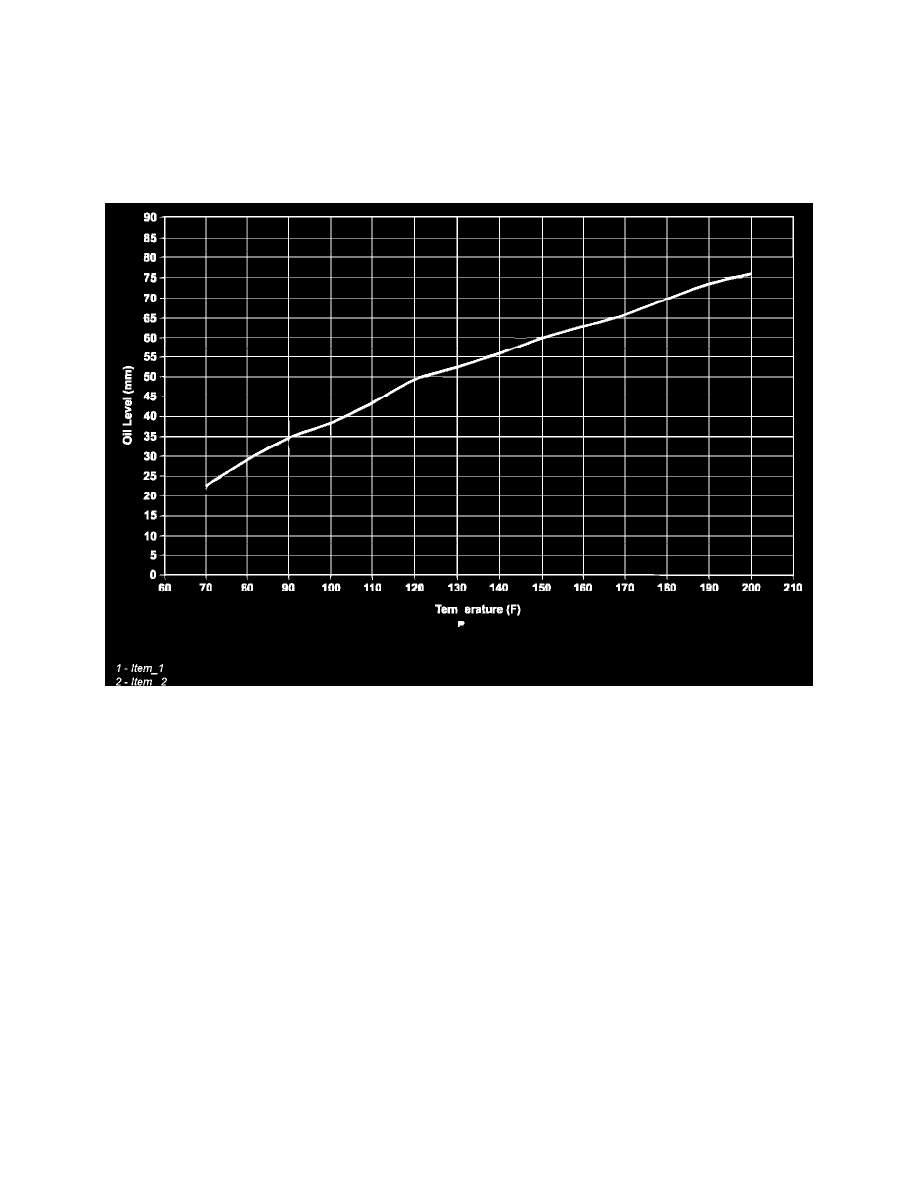Raider 2WD V6-3.7L (2008)

and burns if you insert your hands into the engine when it is started or when it is running. Secure vehicle to prevent it from moving off by itself.
Wear properly fastened and close-fitting work clothes. Do not touch hot or rotating parts.
3. Actuate the service brake. Start engine and let it run at idle speed in selector lever position "P".
4. Shift through the transmission modes several times with the vehicle stationary and the engine idling
5. Warm up the transmission, wait at least 2 minutes and check the oil level with the engine running. Push the Oil Dipstick 9336 into transmission fill
tube until the dipstick tip contacts the oil pan and pull out again, read off oil level, repeat if necessary.
NOTE: The dipstick will protrude from the fill tube when installed.
6. Check transmission oil temperature using the appropriate scan tool.
NOTE: The true transmission oil temperature can only be read by a scan tool in REVERSE or any forward gear position.
7. The transmission Oil Dipstick 9336 has indicator marks every 10mm. Determine the height of the oil level on the dipstick and using the height, the
transmission temperature, and the Transmission Fluid Graph, determine if the transmission oil level is correct.
8. Add or remove oil as necessary and recheck the oil level.
9. Once the oil level is correct, install the dipstick tube cap.
Service Information - 545RFE
FLUID LEVEL CHECK
Low fluid level can cause a variety of conditions because it allows the pump to take in air along with the fluid. As in any hydraulic system, air bubbles
make the fluid spongy, therefore, pressures will be low and build up slowly.
Improper filling can also raise the fluid level too high. When the transmission has too much fluid, the geartrain churns up foam and cause the same
conditions which occur with a low fluid level.
In either case, air bubbles can cause overheating and fluid oxidation, and varnishing. This can interfere with normal valve, clutch, and accumulator
operation.
Foaming can also result in fluid escaping from the transmission vent where it may be mistaken for a leak.
The transmission has a dipstick to check oil level. It is located on the right side of the engine. Be sure to wipe all dirt from dipstick handle before
removing.
The torque converter fills in both the P (PARK) and N (NEUTRAL) positions. Place the selector lever in P (PARK) to be sure that the fluid level
check is accurate.
The engine should be running at idle speed for at least one minute, with the vehicle on level ground. At normal operating temperature (approximately
82° C. or 180° F), the fluid level is correct if it is in the HOT region (cross-hatched area) on the oil level indicator. The fluid level will be
approximately at the upper COLD hole of the dipstick at 21° C (70° F) fluid temperature.
